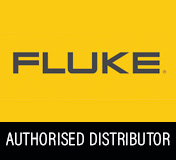Accounting Equations Overview, Formulas & Examples Lesson

The Agency notes that FRPs must be recertified every five years as per § 118.4(a)(6), which will give owners or operators the opportunity to reassess their worst case discharge scenarios. Finally, EPA appreciates the suggested data and information sources suggested by commenters and will evaluate them for purposes of ongoing compliance assistance. While this definition is not part of the Oil Pollution Prevention regulation in 40 CFR part 112, CWA hazardous substances differ from oil in important and varied ways and require different considerations. For instance, certain CWA hazardous substances may have no realistic means of recovery once the substance enters a waterbody, meaning that receptors must be prepared for and swiftly notified of the diluted substance as it travels downstream.

(a) If the quantity of all of the CWA hazardous substance constituent(s) of the mixture or solution is known, the mixture meets the threshold quantity when the maximum quantity onsite, as defined in § 118.2, meets or exceeds the threshold quantity of any CWA hazardous substance in the mixture. (2) Review each facility response plan periodically thereafter on a schedule established by the Regional Administrator. EPA the accounting equation may be expressed as has adjusted the language in this section to clarify that air monitoring and water sample collection, including analytical methods and laboratory support, must be described in this section. Monitoring and sampling are critical components of CWA hazardous substance release responses, since many CWA hazardous substances cannot be recovered, in contrast to oil discharges, where recovery is more likely feasible.
Guide to Understanding Accounts Receivable Days (A/R Days)
Accounts payable recognizes that the company owes money and has not paid. Remember, when a customer purchases something “on account” it means the customer has asked to be billed and will pay at a later date. In this case the purchasing company is the “customer.” The company will have to pay the money due in the future, so we use the word “payable.” The debt owed is usually paid off in less than one accounting period (less than a year typically) if it is classified as an account payable. At the point they are used, they no longer have an economic value to the organization, and their cost is now an expense to the business.
However, EPA stresses that adverse weather conditions, including extreme events due to climate change, must be considered. As such, if a solid stored as a powder or in pellets could release in a high-intensity rainfall event or flood scenario and navigable waters or a conveyance to navigable waters, the covered facility must make a substantial harm determination. Similarly, should a worst case discharge consist of a CWA hazardous substance releasing as a gas that could mix with rainwater and then reach navigable waters or a conveyance to navigable waters, the covered facility owner or operator would need to examine that outcome in their worst case discharge scenario(s). Relatedly, EPA is not choosing to set a temperature range or define the form of the substance as it releases; instead, the covered facility owner or operator should make a similar determination as described above. The Agency recognizes commenter concern over covered facilities with a variable inventory of CWA hazardous substances.
What is the approximate value of your cash savings and other investments?
EPA is not specifying specific climatological data or scenarios in regulation in order to be flexible and in recognition that climate change impacts are occurring in unexpected ways. Indeed, climate change considerations may include the increased frequency and intensity of extreme weather events, temperature fluctuations, rising seas, storm surges, inland and coastal flooding, drought, wildfires, and permafrost melt in northern areas. Instead, the Agency will continue to provide compliance assistance for assessing both climate change impacts and effects on communities with environmental concerns. Again, if the covered facility meets the CWA hazardous substance threshold quantity screening criterion, the owner or operator next determines its distance to navigable waters or a conveyance to navigable waters. In this instance, the covered facility boundary or nearest opportunity for discharge nearest to a navigable water or a conveyance to navigable water as assessed using an online mapping tool is 0.3 miles.
That is, each entry made on the Debit side has a corresponding entry on the Credit side. In order to make sure that the accounts of a company are balanced, the total assets must equal the sum of the total of all liabilities and owner’s equity. To see if everything is balanced, the totals are simply plugged in to the accounting equation.

